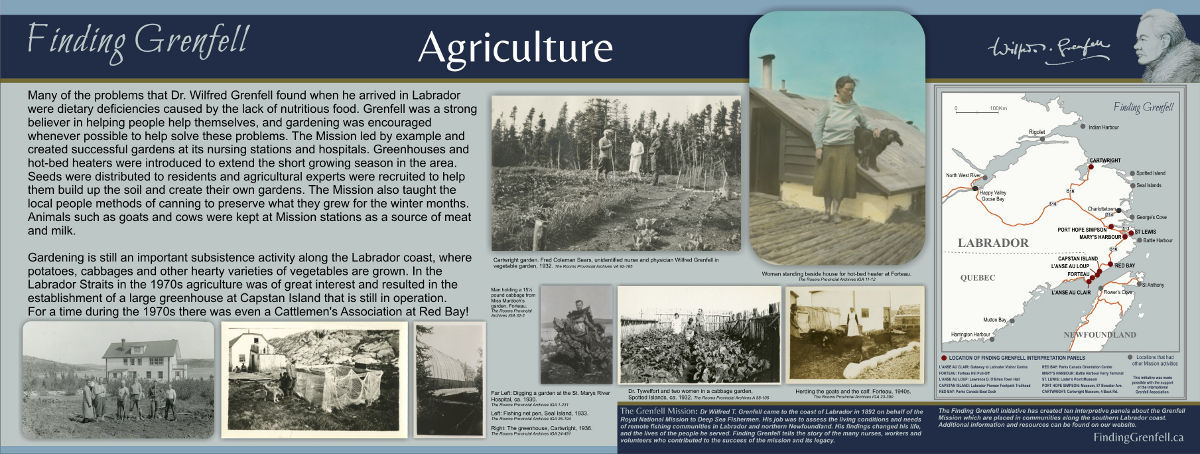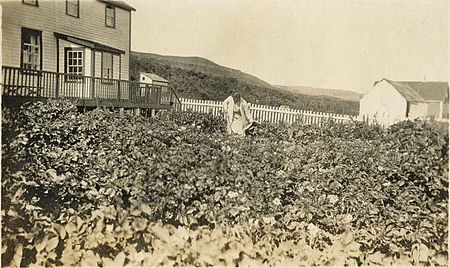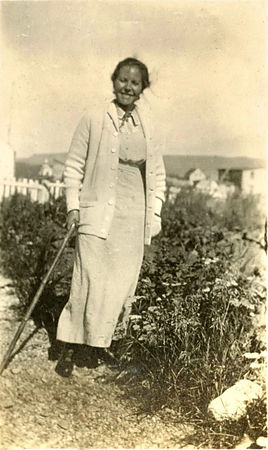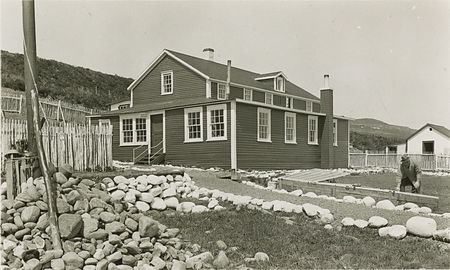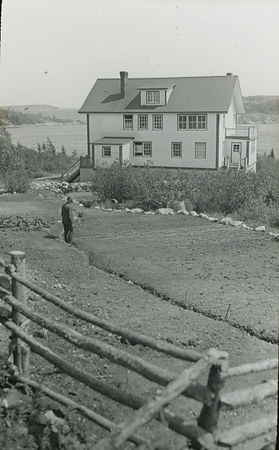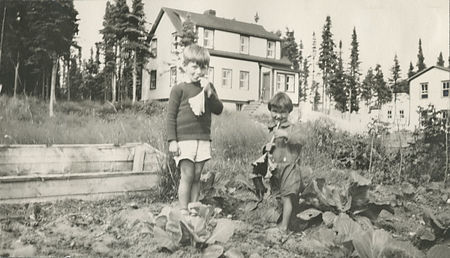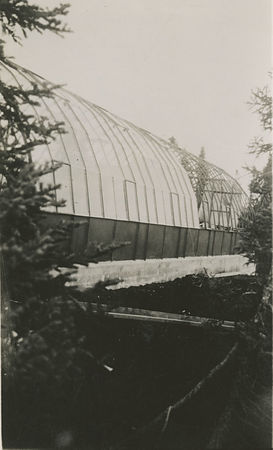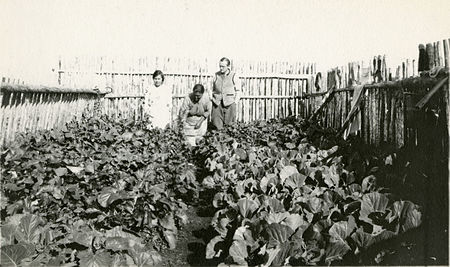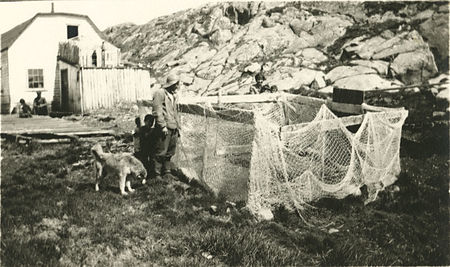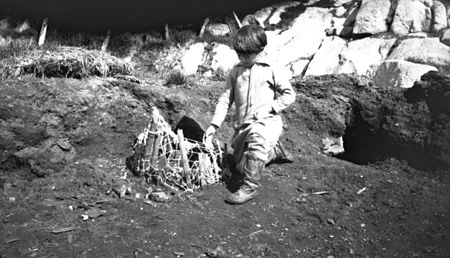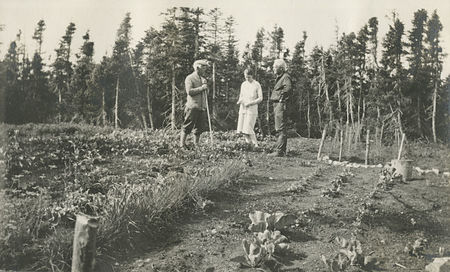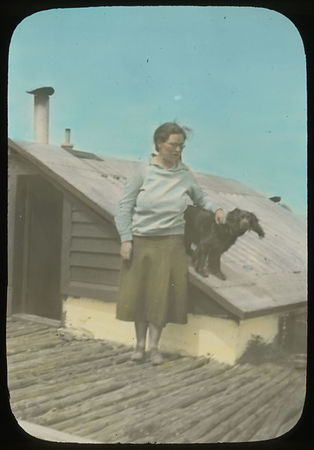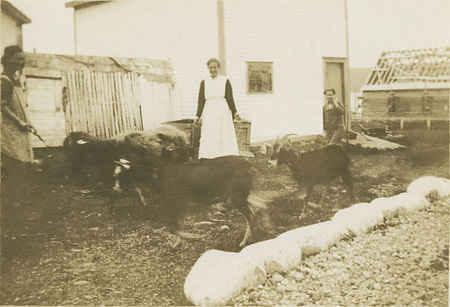Agriculture
Dr. Wilfred Grenfell was a strong proponent of finding ways to help people help themselves. One of these that has had a lasting impact along the coast of Labrador is gardening. A large part of the problem that Grenfell found when he arrived in Labrador was the lack of a proper diet that was causing nutritional deficiencies. The availability of nutritious food was considered very important in the fight against diseases such as tuberculosis.
Gardening was encouraged wherever possible. For example, at Forteau Florence Bailey cultivated a successful garden at Denison Cottage and encouraged the people of the community to do the same. The Mission took responsibility to distribute seeds in the communities in which it worked. At Forteau and other locations, a system of cold frames was used. This was later supplemented by the installation of hotbed heaters in order to extend the growing season, which was relatively short in some areas.
When new mission stations were developed at St. Mary's River and Cartwright in the early 1930s, gardens were cultivated and people of the local area encouraged to plant household gardens to grow vegetables for their own use. By 1931, with the help of the Garden Clubs of America, greenhouses had been established at several locations which started vegetable plants that were distributed to local residents for their household gardens. This made a big difference in extending the short growing season of Labrador.
At the smaller summer stations, such as Seal Islands and Spotted Islands, gardening was also encouraged, and when Dr. and Mrs. Louis Twyeffort left Spotted Islands in 1933, all houses had at least one garden and some had two. In Red Bay, where the soil showed little promise, Minnie Pike and her helpers cleared the rocky land around the Industrial building and grew the first crop of potatoes and cabbage in 1932.
As with most undertakings of the Grenfell Mission, volunteers were important to the development of agriculture. Through most of the 1920s English agricultural graduate Christine Fellowes volunteered with the Grenfell Mission to help in development of agriculture at the Mission stations.
Professor Fred Sears from the Massachusetts Agricultural College spent the summers from 1928 to 1942 at St. Anthony and travelling the Labrador coast to help develop agriculture in the region. He studied the soil of the region and introduced new ideas regarding the raising of livestock and cultivation of gardens.
Among the innovations introduced during his time in Labrador were hot-bed heaters. Cold frames — boxes covered with glass — were used. The heater heated a coil that kept the soil warm in order to increase the growing season. One was installed at the Denison Cottage garden at Forteau.
Professor Sears was also a remarkable photographer and has left an incredible collection of photographs that document life throughout the Grenfell Mission region.
David Tokimasa, who was studying agriculture at Cornell University, spent the summer of 1933 at Red Bay and Forteau assisting with gardening. The old garden at Denison Cottage at Forteau was renewed by the Scottish pair of Nurse Wilhelmina Murdock and volunteer Elizabeth (Lebe) Craig.
Raising livestock at the mission stations was also important as a source of meat and milk. During the early 1940s Dr. Helen Hossmer imported goats for many of the small settlements in the St. Mary's River area.
All along the coast families still cultivate gardens for potatoes and cabbage and other hardy varieties of vegetables. In the Labrador Straits in the 1970s agriculture was of great interest and resulted in the establishment of a large greenhouse at Capstan Island that is still in operation. For a time during the 1970s there was even a Cattlemen's Association at Red Bay!
References
An overview of work in the field of raising livestock by the Grenfell Mission can be found in "Animal Husbandry Experiments at the Grenfell Mission," Among the Deep Sea Fishers, Vol 25(2), July 1927, pp. 84-85.
http://collections.mun.ca/cdm/compoundobject/collection/hs_fisher/id/889/rec/9
Fred Sears wrote an update on the progress of the agricultural program of the Grenfell Mission called "Seeds and Livestock for Labrador," Among the Deep Sea Fishers, Vol 28(1), April 1930, pp. 38-39.
http://collections.mun.ca/cdm/compoundobject/collection/hs_fisher/id/1856/rec/3
After his first summer in Labrador Fred Sears wrote about the "Agricultural Possibilities in Labrador" in Among the Deep Sea Fishers, Vol 26(4), January 1929, pp. 144-47.
http://collections.mun.ca/cdm/compoundobject/collection/hs_fisher/id/1040/rec/6
Fred Sears wrote an update on "The Labrador Garden Campaign," in Among the Deep Sea Fishers, Vol 30(4), January 1933, pp. 167-71.
http://collections.mun.ca/cdm/compoundobject/collection/hs_fisher/id/9259/rec/30
This was followed by "The 1933 Labrador Garden Campaign," in Among the Deep Sea Fishers, Vol 32(1), April 1934, pp. 8-12.
http://collections.mun.ca/cdm/compoundobject/collection/hs_fisher/id/9312/rec/32
Knowles A. Ryerson of the United States department of Agriculture wrote of the importance of gardening to the improvement of health in Labrador in "Health and Happiness in Labrador," Among the Deep Sea Fishers, Vol 27(1), April 1929, pp. 14-16.
http://collections.mun.ca/cdm/compoundobject/collection/hs_fisher/id/1146/rec/2
A video documenting agriculture activity in the Labrador Straits during the 1970s:
https://www.youtube.com/watch?v=Kj_22d8VR30
